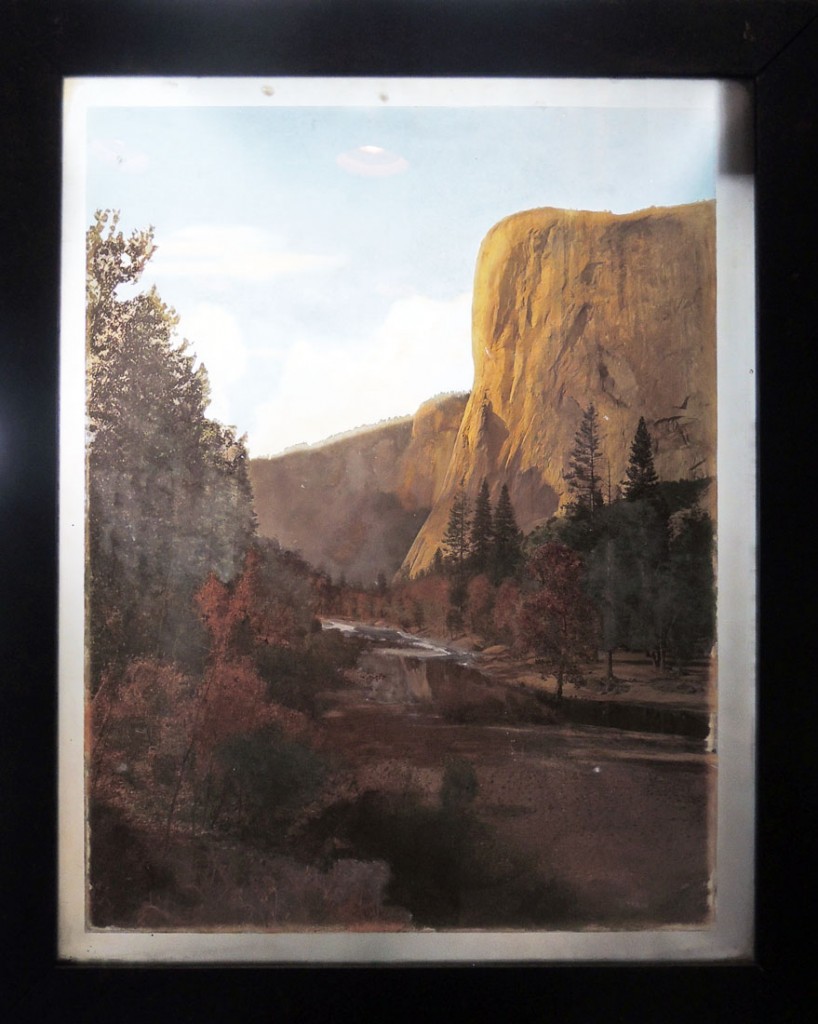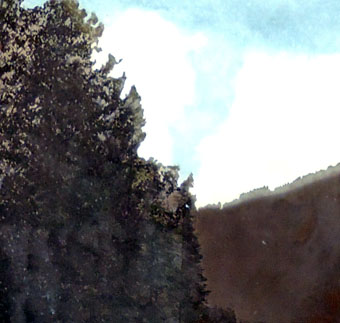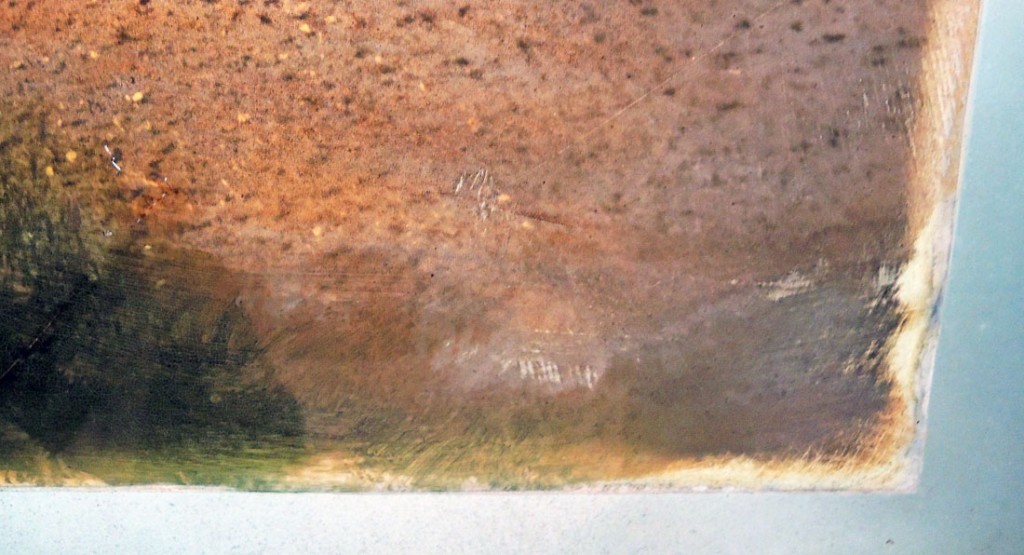 Artist unidentified, El Capitan, ca. 1870. Frame: 81 x 66.5 cm. Graphic Arts Collection
Artist unidentified, El Capitan, ca. 1870. Frame: 81 x 66.5 cm. Graphic Arts Collection
This reverse painting on glass features an albumen silver print as the basis for the nineteenth-century landscape. Also called verre églomisé, after Jean-Baptiste Glomy (1711-1886), reverse painting has been practiced since the Middle Ages. Conservators and curators at the Winterthur Museum posted an excellent description at http://www.winterthur.org/pdfs/winterthur_primer_glass.pdf.
Often in the seventeenth and eighteenth centuries, an engraving would be used to establish the outline or basic design of the painting. When photography became viable in the nineteenth century, portraits in particular were painted over low resolution photographic prints.
While the exact photograph under our painting has not been identified, it could be one of the mammoth prints made by Carleton Watkins (1829–1916). He photographed Yosemite Valley a number of times during the 1860s, while working for the California State Geological Survey. Many of these were reprinted over the years in a variety of sizes and formats.
 Carleton Watkins (1829-1916), Tutocanula, or El Capitan, 3600 feet, no date.
Carleton Watkins (1829-1916), Tutocanula, or El Capitan, 3600 feet, no date.
When examining the reverse painting closely, you can see the photograph has been torn around the edge of the trees and mountains, leaving a clear area to paint the sky. The highlights, usually done last when painting on canvas, must be laid down first on glass in order for them to be seen when the glass pane is turned around.


